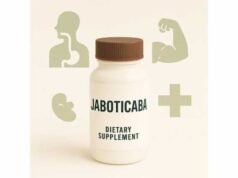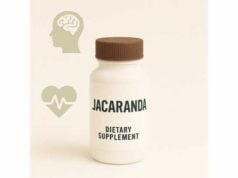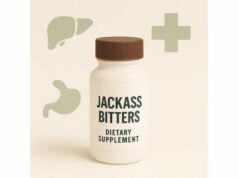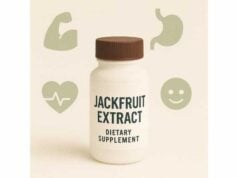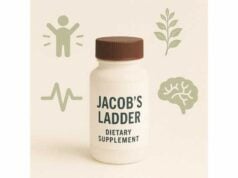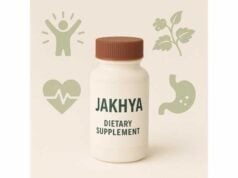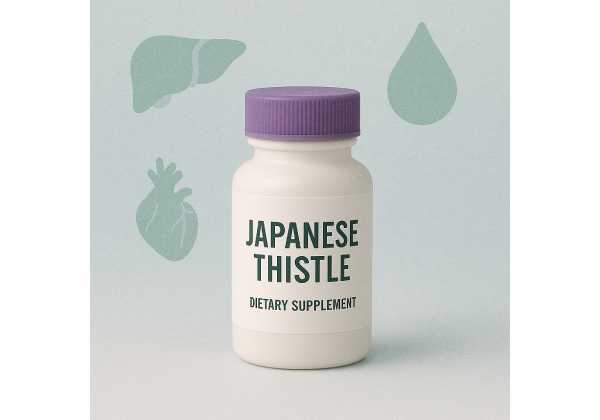
Japanese thistle (Cirsium japonicum) is a hardy wild thistle long used across Japan, Korea, and China as a cooling, hemostatic herb. In traditional practice it’s known for helping stop minor bleeding, easing swelling, and supporting liver health. Modern lab and animal studies add detail: extracts show antioxidant activity, may modulate inflammation, and have been explored for metabolic and skin-aging pathways. A small human trial of a Japanese thistle–based complex suggests potential support for menopausal comfort.
This guide translates both tradition and emerging science into practical steps: how Japanese thistle works, the most studied benefits, sensible ways to use it (tea, powder, and standardized extracts), how much to take, and who should skip it. You’ll also learn what compounds to look for (like apigenin, cirsimaritin, chlorogenic acid), how to read labels so you’re not buying the wrong thistle, and how to use it safely alongside common medicines. The goal is balanced, people-first clarity—where claims are reasonable, examples are concrete, and every recommendation is grounded in how individuals actually take and respond to herbs.
Quick Overview
- Traditionally used to help stop minor bleeding and cool swollen, irritated tissues.
- Early research suggests antioxidant and liver-support actions; data in humans remain limited.
- Typical traditional decoction uses 9–15 g dried herb daily (up to 30 g), or 300–600 mg/day standardized extract.
- Avoid if pregnant, trying to conceive, or if you use blood thinners or antiplatelet medication.
Table of Contents
- What is Japanese thistle and how does it work?
- Evidence-based benefits: what it may help
- How to use it: teas, powders, and extracts
- How much Japanese thistle per day?
- Side effects, interactions, and who should avoid
- Active compounds and quality checks that matter
What is Japanese thistle and how does it work?
Japanese thistle (Cirsium japonicum, sometimes called “No-azami” or “Da Ji” in East Asian materia medica) is a perennial thistle in the Asteraceae family. Herbalists traditionally use the aerial parts—stems, leaves, flowers—fresh or dried. The taste is slightly bitter and astringent, reflecting two hallmark actions: cooling inflamed tissues and constricting small vessels to limit minor bleeding. In East Asian practice, it’s commonly paired with herbs that move stagnant blood or soothe the liver.
From a chemistry standpoint, Japanese thistle is rich in polyphenols and flavonoids. Key constituents reported in the modern literature include apigenin, luteolin, cirsimarin, cirsimaritin, pectolinarin, chlorogenic acid, and related phenolics. These molecules often act as antioxidants in cell systems, scavenge reactive oxygen species, and may influence inflammatory signaling (for example, NF-κB pathways) and metabolic regulators (such as AMPK). Some flavone glycosides in Japanese thistle are structurally similar to compounds in other bitters that modulate bile flow and lipid handling in animal models.
Why do people reach for Japanese thistle? Three broad reasons:
- Hemostatic support for minor, self-limited bleeding. In traditional use, charred herb or strong tea is used short term for nosebleeds, gum bleeding, or heavy menses—always as an adjunct to proper medical evaluation if symptoms are recurrent or severe.
- Liver and metabolic support. Extracts have been studied in rodents for fat accumulation in the liver and lipid regulation. While promising, human confirmation is limited.
- Skin and connective tissue comfort. Antioxidant and anti-inflammatory activity has prompted exploratory work for photoaging and oxidative stress in skin models.
An important naming note: “thistle” covers many unrelated plants. Milk thistle (Silybum marianum) is a different species with different chemistry. When shopping, look for the full botanical name Cirsium japonicum (and for varieties, such as C. japonicum var. maackii), then confirm plant part (aerial parts/herb) and extract ratio or standardization.
Mechanistically, several plausible pathways can be mapped from its chemistry:
- Vascular tone and bleeding: Astringent phenolics may constrict small vessels and support clot formation in vitro, aligning with traditional hemostatic use.
- Inflammation and oxidative stress: Flavones like apigenin and cirsimaritin have been studied for dampening pro-inflammatory mediators and reactive oxygen species in cultured cells.
- Metabolic regulation: In animal studies, extracts sometimes increase AMPK activity, reduce hepatocellular lipid accumulation, and modulate adipocyte function; these effects have not been validated as clinical endpoints in people.
Bottom line: Japanese thistle is a traditional hemostatic and cooling herb with a modern profile that suggests antioxidant and metabolic relevance. It’s not a replacement for medical care, but it can be considered, thoughtfully and short term, for specific goals with attention to safety.
Evidence-based benefits: what it may help
1) Minor hemostatic support (traditional core use).
Japanese thistle has a long reputation for helping slow minor bleeding. Historical pharmacopoeia entries classify it as a hemostatic herb, and charred herb preparations are often highlighted for this purpose. Early bench research isolated hemostatically active fractions from Cirsium japonicum, supporting a plausible basis for traditional practice. In day-to-day terms, this may translate to short-term adjunctive use for frequent nosebleeds or gum bleeding, provided underlying causes (e.g., hypertension, platelet issues, medications) are addressed by a clinician.
2) Antioxidant capacity and tissue calm.
Aerial parts of Japanese thistle contain a mix of polyphenols that show antioxidant activity in vitro and in food models. Phenolic-rich extracts can reduce lipid peroxidation and scavenge free radicals in cell assays. These effects, while not a clinical endpoint, are consistent with users’ reports of “cooling” irritated tissues and with the herb’s traditional temperature classification.
3) Liver and metabolic markers in animal models.
Rodent studies report that ethanol or aqueous extracts of Cirsium japonicum may reduce triglyceride and cholesterol accumulation in the liver, potentially via AMPK activation and downstream changes in lipid metabolism. Some mouse models of metabolic dysfunction-associated fatty liver disease (MAFLD) show improved histology after chronic extract intake. These findings are hypothesis-generating; they do not equate to a human treatment. Still, they help explain why the herb appears in folk formulas for “liver heat” or “stagnation.”
4) Menopausal comfort (early human signal with a complex).
A randomized, double-blind, placebo-controlled trial evaluated a botanical complex containing Cirsium japonicum var. maackii with Thymus vulgaris in peri-/premenopausal women. Over 12 weeks, the complex improved composite menopausal symptom scores and quality-of-life measures versus placebo, with acceptable safety. Because the formula included thyme and was standardized as a proprietary complex, you can’t attribute effects to Japanese thistle alone. Nevertheless, it hints at a role for thistle-derived flavones in vasomotor or mood-related domains when appropriately formulated.
5) Skin and cellular aging pathways (preclinical).
Extracts from Japanese thistle flowers and their apigenin content have been studied in glial and skin-related cell models exposed to oxidative or amyloid stress, showing improved viability and reduced reactive oxygen species. These are early, preclinical data that do not predict cosmetic or dermatologic outcomes in humans, but they align with the herb’s overall antioxidant profile.
6) Glycemic and lipid nuances (preclinical).
Isolated flavones like pectolinarin have been explored for effects on adipocytes (fat cells), glucose uptake, and lipid accumulation in animals and cultured cells. Some experiments indicate improved insulin signaling or lipid handling. Again, translation to everyday blood glucose or lipid panels in people is unproven.
Practical perspective: If your goal is quick hemostatic support for self-limited minor bleeding or gentle antioxidant support within a broader wellness routine, Japanese thistle fits the historical and laboratory picture. For metabolic, menopausal, or skin outcomes, the current human evidence is preliminary and product-specific. Use the herb as part of a larger plan—nutrition, sleep, exercise, medication management—and treat it as complementary, not foundational.
How to use it: teas, powders, and extracts
Aerial herb tea (traditional).
The classic approach uses the dried aerial parts. A common household method is a decoction: simmer 9–15 g of the cut herb in about 500–700 mL water for 15–25 minutes, strain, and sip in 2–3 divided servings across the day. For short-term hemostatic aims, traditional texts often call for charred herb (a pharmacist may supply a pre-prepared “carbonized” version), or for using the fresh plant when available. If taste is too bitter, combine with a neutral tea base or a slice of fresh ginger to soften the edge.
Powdered herb.
Powdered aerial parts can be taken in capsules or mixed into warm water. Start low to assess tolerance—e.g., 1–2 g twice daily—and adjust toward 3–6 g/day if recommended by your practitioner. Powders are easy to dose but may be more astringent on the stomach; taking them with food can help.
Standardized extracts.
If you prefer concentrated capsules, look for products that specify:
- The botanical Cirsium japonicum (not milk thistle, not artichoke).
- The plant part (Herba/aerial parts).
- An extract ratio (e.g., 10:1) or marker standardization (for example, apigenin, cirsimarin/cirsimaritin, chlorogenic acid).
A reasonable trial range for quality extracts is 300–600 mg/day in divided doses with meals. If a label uses a proprietary complex (e.g., combined with thyme or other herbs), follow the manufacturer’s daily serving and consider logging your symptoms for 2–4 weeks to track response.
Topical use.
Japanese thistle is primarily an internal herb. While antioxidant extracts are being explored for skin models, there is no established topical dose. If a cosmetic includes Cirsium japonicum extract, use according to product directions and patch-test first.
Formulation ideas (for trained practitioners):
- For short-term nosebleeds or gum bleeding: pair with herbs that astringe and cool while evaluating underlying causes; a charred thistle tea can be used for 2–3 days.
- For metabolic wellness: combine with diet improvements and activity; consider thistle as a 4–8 week adjunct trial at low-to-moderate extract doses while monitoring liver enzymes and lipids with your clinician.
- For perimenopausal comfort: if a multi-herb complex is used, keep expectations modest and watch for interactions with hormone-active therapies.
What not to do.
Do not self-treat significant or unexplained bleeding, heavy or irregular periods, black/tarry stools, coughing blood, or easy bruising. These are medical issues that require prompt evaluation.
How much Japanese thistle per day?
There is no universal, modern standardized dose for Japanese thistle. Dosage varies by form, goal, and individual context.
Typical ranges used in practice
- Traditional decoction (dried aerial parts): 9–15 g/day, short term, with some sources allowing up to 30 g/day when supervised by an experienced practitioner. Split into two or three servings.
- Powdered herb: 3–6 g/day in divided doses. Start at the low end and adjust with guidance.
- Standardized extract (capsules): 300–600 mg/day in one or two doses with food, especially if the extract is a 10:1 equivalent or standardized to key markers (e.g., apigenin, cirsimarin/cirsimaritin, chlorogenic acid). For proprietary complexes, follow the label.
Duration
- For hemostatic support of minor issues, think short course (often 2–3 days) while addressing causes and seeking care if symptoms persist or recur.
- For antioxidant or general wellness aims, herbalists often suggest 2–8 weeks, then reassess. If no clear benefit after a month, discontinue.
Population adjustments
- Older adults: start at the low end and monitor blood pressure, bruising, and medication interactions.
- Adolescents: herbal use should be supervised; dosing by body weight is typical in professional practice.
- Pregnancy or trying to conceive: avoid unless your obstetric provider recommends it; traditional hemostatic herbs are generally not used electively in pregnancy.
- Breastfeeding: insufficient safety data—avoid or use only with clinician oversight.
What to expect
- Hemostatic effects, when they occur, should be noticeable quickly for minor issues (within hours to a day).
- For metabolic, skin, or menopausal comfort goals, any change is gradual; track outcomes (e.g., symptom scores, energy, sleep) over weeks.
When to stop
- If you notice dizziness, unusual bruising, heavy or unexplained bleeding, rash, nausea that persists, or blood pressure drops, discontinue and seek care.
- Pause 5–7 days before a scheduled procedure or dental extraction, unless your clinician instructs otherwise.
Side effects, interactions, and who should avoid
Common tolerance: Most people tolerate Japanese thistle in traditional amounts without issues. The most frequent complaints are mild digestive upset (nausea, stomach heaviness) or a chalky, astringent aftertaste. These usually resolve by lowering the dose or taking with food.
Bleeding risk and blood pressure: Because the herb’s traditional use targets minor bleeding and vasoconstriction, it’s tempting to assume it’s always “pro-clotting.” Real biology is more nuanced: polyphenols can influence platelet function and vascular tone in both directions depending on context and concentration. If you take antiplatelet or anticoagulant drugs (e.g., aspirin, clopidogrel, warfarin, apixaban), or if you have a bleeding disorder, do not use Japanese thistle without clinician guidance. Similarly, if you have uncontrolled hypertension or experience frequent nosebleeds, see a clinician first; an herb is not a substitute for diagnosing the cause.
Liver considerations: Traditional sources place Japanese thistle in formulas for “liver heat” or stagnation, and some animal studies suggest hepatoprotective effects. That does not guarantee safety if you have pre-existing liver disease or take multiple hepatically metabolized drugs. If you choose to trial a standardized extract for metabolic support, ask your clinician about baseline and follow-up ALT/AST checks.
Hormone-sensitive conditions: A small clinical study of a complex containing Japanese thistle found improvements in menopausal symptoms. Flavones like apigenin can interact with estrogen pathways in vitro. If you have a hormone-sensitive cancer history or take hormone therapy, use caution and coordinate with your oncology or gynecology team.
Allergy and cross-reactivity: If you are allergic to Asteraceae family plants (ragweed, daisies, chrysanthemums), use with caution; allergic dermatitis or oral itching may occur.
Special populations who should avoid or seek supervision
- Pregnant or trying to conceive: avoid unless your obstetric provider recommends it.
- Breastfeeding: avoid due to limited safety data.
- Children: use only under professional supervision.
- Pre-/post-operative patients: stop at least 5–7 days prior to procedures due to theoretical bleeding/platelet effects and to simplify perioperative management.
- Those on multiple medications affecting clotting, blood pressure, or liver enzymes: consult a clinician or pharmacist before use.
Drug interaction watchlist (theoretical and practical)
- Anticoagulants/antiplatelets: possible additive effects; monitor INR or bleeding/bruising.
- NSAIDs: increased gastrointestinal irritation risk.
- Antihypertensives: monitor for lightheadedness if you notice blood pressure shifts.
- CYP-metabolized drugs: flavonoids can inhibit or induce certain enzymes in vitro; while clinical significance is uncertain at dietary doses, caution is warranted with narrow-therapeutic-index drugs.
Practical tip: Keep your herb list on your phone and share it at appointments. If you add Japanese thistle, note your start date, product, daily amount, and any changes you observe.
Active compounds and quality checks that matter
Know your plant. Look for Cirsium japonicum on the label and, ideally, the specific variety (e.g., C. japonicum var. maackii). Avoid confusion with milk thistle (Silybum marianum) or other “thistles.” The label should specify Herba (aerial parts) or a defined plant part.
Marker compounds to watch
- Apigenin: a flavone studied for antioxidant and cell-signaling effects; often used as a marker in flower extracts.
- Cirsimarin and cirsimaritin: flavone glycoside and aglycone associated with Cirsium species; sometimes used for standardization.
- Chlorogenic acid: a phenolic whose antioxidant capacity is widely studied; presence supports overall polyphenol content.
- Pectolinarin: a Cirsium-associated flavone tested in metabolic models.
A label that states, for example, “standardized to ≥ 2% apigenin and ≥ 5% total flavonoids by HPLC,” or an extract ratio (e.g., 10:1), helps you compare products. For teas and powders, you won’t see marker numbers; instead, rely on sourcing and freshness.
Quality and sourcing checklist
- Identity testing: reputable brands verify species by macroscopic, microscopic, or chromatographic methods; HPLC fingerprints can distinguish C. japonicum from close relatives.
- Contaminant screening: ask for third-party testing for heavy metals, pesticides, and microbial counts—especially for wild-harvested herbs.
- Harvest timing: aerial parts harvested during early flowering often have higher flavonoid levels.
- Color and aroma: quality dried herb has a green-brown color with a faintly bitter, grassy aroma; stale material smells musty.
Formulation considerations
- Charred (“carbonized”) herb is a traditional preparation for hemostatic aims; modern suppliers may offer a pre-charred product. This is not the same as burning the herb at home.
- Complexes (with thyme, for example) target multi-pathway support; when choosing a complex, review the evidence for each component and any overlapping interactions.
- Food pairing: bitter greens, dandelion leaf, and artichoke can complement a metabolic-support approach; avoid combining with multiple blood-affecting herbs (e.g., high-dose ginkgo, high-dose garlic) without guidance.
Storage
Keep teas and powders in airtight containers away from heat and light. Most products remain potent 12–24 months post-harvest if stored well; extracts usually carry manufacturer-tested shelf lives.
Signals of effectiveness
- For minor bleeding support: episodes become less frequent or shorter in duration (tracked over weeks).
- For general antioxidant/comfort goals: less gum irritation, improved oral comfort, or fewer “heat” sensations are often how users describe benefits.
- For complex goals (menopausal comfort, metabolic wellness): use formal trackers (Kupperman or MenQoL symptom scores, lifestyle logs, lab panels as indicated).
References
- Ameliorative effects of Cirsium japonicum extract and main compound, cirsimaritin on metabolic dysfunction-associated fatty liver disease in mice 2021 (Preclinical)
- A Complex of Cirsium japonicum var. maackii (Maxim.) Matisum. and Thymus vulgaris L. Improves Menopausal Symptoms and Supports Healthy Aging in Women 2022 (RCT, complex)
- Studies on antihemorrhagic substances in herbs classified as hemostatics in Chinese medicine. VII. On the antihemorrhagic principle in Cirsium japonicum DC 1987 (Seminal)
- Chlorogenic acid as a polyfunctional phytochemical: non-enzymatic and enzymatic oxidation, and down-stream metabolic pathways 2013 (Review, mechanistic)
- Antioxidant Capacity of Thistle (Cirsium japonicum) in Sunflower Oil and Influence of Drying Methods on Its Phenolic Content 2020 (Preclinical/food model)
Disclaimer
The information in this article is educational and does not substitute for personalized medical advice, diagnosis, or treatment. Herbal products can interact with medications and may not be appropriate for everyone. If you are pregnant, breastfeeding, managing a medical condition, or taking any medicines (especially blood thinners, antiplatelets, or antihypertensives), consult a qualified healthcare professional before using Japanese thistle. Seek urgent care for heavy, unexplained, or persistent bleeding.
If you found this guide helpful, please consider sharing it on Facebook, X (formerly Twitter), or your favorite platform, and follow us for future updates. Your support helps us continue creating accurate, people-first health content.

